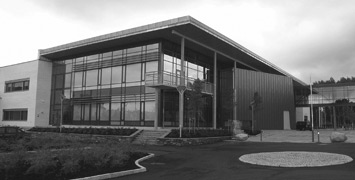
Collaboration brings peace of mind and reduces costs
Major public service projects requiring long-term investment often face problems with funding. New forms of co-operation could be a solution.
PPP projects are common in the UK, but similar projects are also under way in Norway and Finland. The gain comes from increasing the efficiency of the project by collaborating on both the construction and the financing. All parties contribute knowledge from their core area, leading to an optimised allocation of risks and responsibilities. The life cycle costs can also be reduced through Public Private Partnerships. This means that the total costs for running, maintaining, financing and owning the facilities throughout the period of the contract are calculated at the planning stage.
“It’s not a question of privatisation but of rationalisation,” says Trygve Strand, contract manager for service in schools at Coor in Norway.
When the schools in Persbråten and Høybråten were due for construction and restoration, the City of Oslo chose the PPP approach. Ownership of the schools was taken over by SG Finans AS, Skanska carried out the construction and Coor was commissioned to deal with facility management and maintenance for 25 years. After that period, both the schools and the facility management will be returned to the city authority.
The benefit of PPS for the city is the predictability: they know what the costs will be during the entire contract period. Another advantage is modern, well-maintained schools which the municipality can take over with no renovation requirement when the contract period comes to an end. Moreover, the service management company has the resources to develop the services it provides during the contract period. Something most local authorities quite simply cannot afford to do alone.
Trygve Strand considers the long-term nature of the project as the main benefit for Coor.
“It enables us to plan our operation a long time ahead and thereby optimise our resources. We also have good insight into the kinds of costs that could arise as we have been involved in the project from the word go.”
Coor has been able to influence the construction process from an early stage in order to make future facility management easier, for example through the choice of right materials, technical solutions and functional interior layout.
“We know we have to keep an eye on maintenance costs and set aside funds for that. We now believe we have a very realistic idea of what will be required.”
So is it really as simple as it sounds?
“PPP projects are far from simple, but it’s the meticulous groundwork that produces the real dividends. The process takes a very long time and it’s vital that all parties in the partnership share their knowledge and experiences. Only then can we start streamlining and creating margins.”

Facts – PPPs
Public Private Partnerships (PPPs) cover various forms of partnership between the public and private sectors. The most common are partnerships that entail procuring and executing projects involving infrastructure. PPPs reduce the risk of the project for the public sector, which gets a fixed price with delivery on a particular date. The private sector contributes expertise and cost consciousness.
Do you have any questions or would you like to know more?
Contact Trygve Strand, trygve.strand@coor.com or by phone on +47 928 515 34
